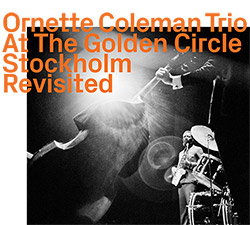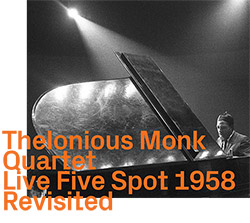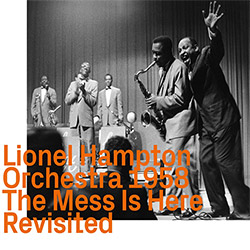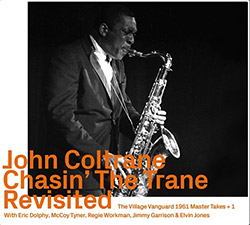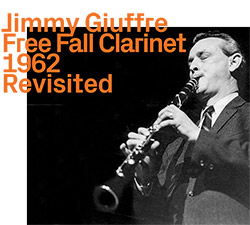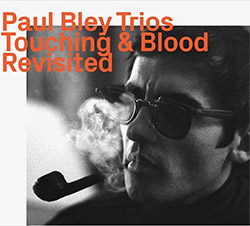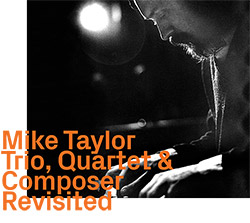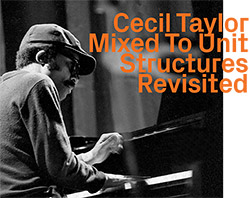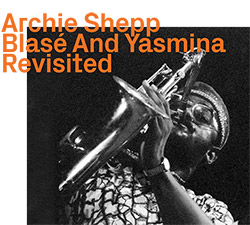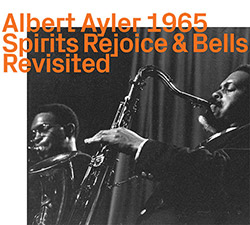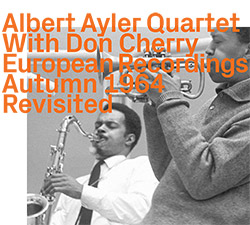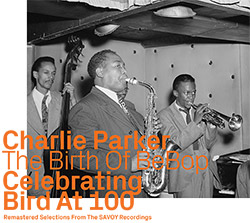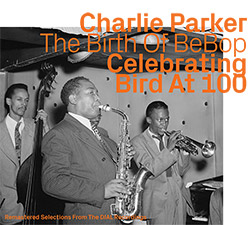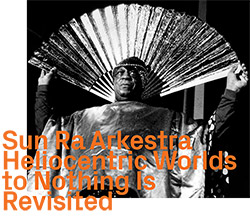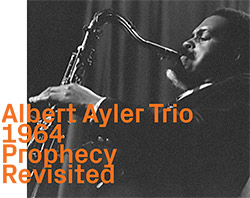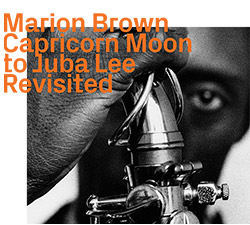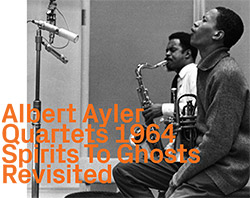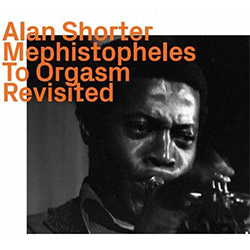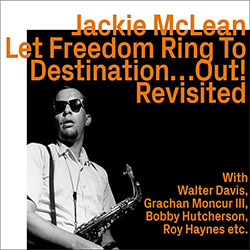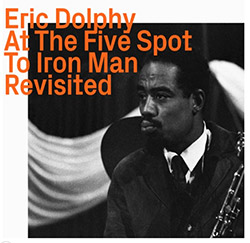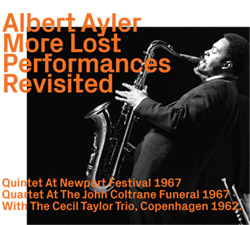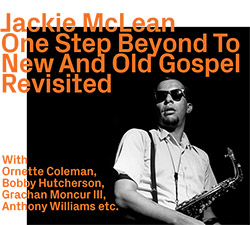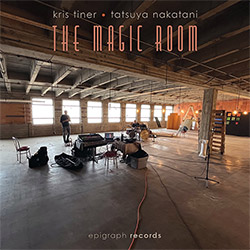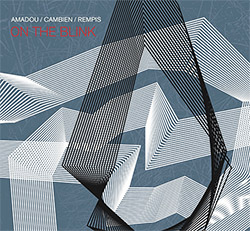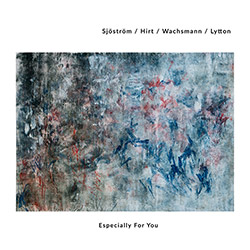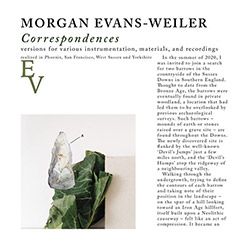![Harriott, Joe Quintet: Free Form & Abstract Revisited [2 CDs] (ezz-thetics by Hat Hut Records Ltd) Harriott, Joe Quintet: Free Form & Abstract Revisited [2 CDs] (ezz-thetics by Hat Hut Records Ltd)](https://www.teuthida.com/productImages/misc4/30779.jpg)
Two essential early 60s release from famed UK saxophonist Joe Harriott, an innovator bringing free jazz concepts to the British audience with his quintet of Shake Kane on trumpet & flugelhorn, Pat Smythe on piano, Coleridge Goode on double bass and Phil Seaman on drums, referencing the new forms of jazz from US artists like Don Cherry and Ornette Coleman.
In Stock
Quantity in Basket: None
Log In to use our Wish List
Shipping Weight: 2.00 units
Sample The Album:
Free Form-personnel:
Joe Harriott-alto saxophone
Shake Keane-trumpet & flugelhorn
Pat Smythe-piano
Coleridge Goode-double bass
Phil Seamen-drums
Abstract-personnel:
Joe Harriott-alto saxophone
Shake Keane-trumpet & flugelhorn
Pat Smythe-piano
Coleridge Goode-double bass
Bobby Orr-drums (tracks 1 to 4)
Phil Seamen-drums (tracks 5 to 8)
Frank Holder-bongos (tracks 5 & 8)
Click an artist name above to see in-stock items for that artist.
UPC: 752156112129
Label: ezz-thetics by Hat Hut Records Ltd
Catalog ID: ezz-thetics 1121-2
Squidco Product Code: 30779
Format: 2 CDs
Condition: New
Released: 2021
Country: Switzerland
Packaging: Cardboard Gatefold
CD 1 recorded in London, England, on November 23rd and 30th, 1960, by Adrian Kerridge.
CD 2 recorded in London, England, on November 22nd, 1961, and May 10th, 1962.
Free Form originally released in the US & Europe in 1961 on vinyl LP by the JAZZLAND label with catalog code JLP 49. Abstract originally released in 1963 in the UK as a vinyl LP on the Columbia label with catalog code 33SX 1477, and in the US on Capitol Records with catalog code ST 10351.
"In August 1965, Ornette Coleman came to the United Kingdom and played a concert that combined a hastily confected piece for wind quintet - a quote on visiting American jazz musicians meant he had to switch coats and come as a composer rather than a mere improviser - with a trio performance alongside bassist David Izenzon and drummer Charles Moffett. On the night they played the Fairfield Halls in Croydon, an occasion fully documented on record, the British pop charts were headed by Sonny & Cher's "I Got You Babe", but otherwise mostly home-grown acts: the Beatles, Jonathan King, the Animals, The Dave Clark Five, the Shadows. The only other American act was the Byrds, and there were two novelty outliers in the form of Horst Jankowski's "Walk In The Black Forest" and Marcello's Minerbi's "Zorba's Dance", probably bought by older listeners with memories of National Service in Germany or dream holidays among the Greek islands.
Coleman played to a mostly responsive house, though there was a heckler (British audiences are inventive at heckling, as Bob Dylan discovered the following spring at Manchester's Free Trade Hall) who felt Coleman wasn't playing enough jazz, or in "Silence" enough of anything at all. Ornette angrily or amiably responded by playing "Cherokee" and got an appreciative round of applause. British jazz fans were still divided along ideological lines: the "dirty beboppers" on one side, and the "mouldy fygges" who stuck to traditional and mainstream music on the other. But there was little sense that Coleman's music was in any sense a shock, as it had clearly been to New York audiences when he first came East from California. Indeed, many American musicians felt that they were more openly appreciated for experimental, edgy or non-idiomatic music in Britain and Europe than they were at home. The British reputation for hide-boundness wasn't always supported by evidence.
It's dangerous to attribute too much influence to cultural phenomena that were very little known at the time and whose real impact was long-term and retrospective, but it's clear than within British jazz of the early 1960s, there was a strong tolerance for experiment. Later in the decade, jazz-rock and fusion emerged at exactly the same time as Larry Coryell's and Miles Davis's first ventures with electricity. And so it was that in 1965, British fans and critics were already aware of the possibilities of freedom in jazz, sometimes through American visits - John Coltrane's much-bootlegged 1961 tour with Eric Dolphy remains the most obvious - but often because of native productions.
Not quite native in Joe Harriott's case, since he came to the UK at the age of 23, part of a wave of musicians from the islands who arrived in the early years of the decade and helped to reshape the sound and mood of British jazz. Comparison between Harriott and Ornette Coleman is obviously clinched by both being alto saxophonists, but also because both worked in close almost twinned partnership with trumpet players: Don Cherry in Ornette's case, Shake Keane in Harriott's. National pride frequently dictates a conviction that local musicians are as good as, or even superior to, the American product and many commentators have ventured as far as to suggest that Joe Harriott was, indeed, in advance of Coleman in pioneering freedom in jazz and an overturning of harmony as the main structural component.
The problem with legends - and Harriott certainly is in Britain - is that one reads the legend and stops listening to the music. Joe's first record, for Jazzland, was Southern Horizons. It reveals him as a loyal bopper/hard bopper, with some distinctive tonalities. In the same way, when later he collaborated with John Mayer on Indo-Jazz Suite and Indo-Jazz Fusions, the results were never quite as exotic or "other" as some supporters like to pretend. Harriott remained a jazz man rather than an avant-gardist.
He was, however, a very exceptional jazz man. Nobody, apart from maybe Kippie Moeketsi, Dudu Pukwana or Jackie McLean on his day, ever played with such transparent pain and joy. Despite his ill-health, he exudes a formidable expressive energy. But it's important to be clear what kind of musician Harriott was and that means looking past the rhetoric and the casual labelling. Like Charlie Parker, Harriott at his most typical was an effortless melodist. Look past the more forbidding titles on Free Form and Abstract - "Formation", "Coda", "Abstract", "Straight Lines", or "Subject", "Modal", "Tonal" on the second record and you'll hear something different to what your eyes are telling to expect. It isn't that Harriott doesn't experiment in free form or doesn't indulge in abstract ideas, more that he embraces them within a much more challenging extension of the tradition. Pure experiment is easy. Evolution of an idiom takes great creative intelligence.
"Calypso" on the first album and Sonny Rollins' "Oleo" on the second are the real pointers to who Harriott was. He blended freedom and abstraction with blues-inflected changes jazz in a way that was to become typical of British improvisation. The sessions are valuable for glimpses of two further lost legends of the UK scene, pianist Pat Smythe and the self- destructive power of drummer Phil Seamen, who sounds instinctively attuned to what Harriott is trying to do."-Brian Morton, June 2021
Artist Biographies
• Show Bio for Joe Harriott "Joseph Arthurlin Harriott (15 July 1928 - 2 January 1973) was a Jamaican jazz musician and composer, whose principal instrument was the alto saxophone. Initially a bebopper, he became a pioneer of free-form jazz. Born in Kingston, Harriott moved to the United Kingdom as a working musician in 1951 and lived in the country for the rest of his life. He was part of a wave of Caribbean jazz musicians who arrived in Britain during the 1950s, including Dizzy Reece, Harold McNair, Harry Beckett and Wilton Gaynair. Born in Kingston, Jamaica, Harriott was educated at Alpha Boys School, an orphanage in the city. At Alpha he learned to play the clarinet, the instrument that was assigned to him shortly before his tenth birthday. He took up the baritone and tenor saxophone while performing with local dance bands, before settling on the alto saxophone. Harriott arrived in London in the summer of 1951, aged 23, as a member of Ossie Da Costa's band. British subjects did not require work permits or immigration visas at that time. When the band had completed their tour, Harriott decided to stay in London. He caught the attention of London's jazz scene while sitting in at the Feldman Club on Oxford Street on 26 August 1951. Like the majority of alto players of his generation, he was deeply influenced by Charlie Parker. Harriott developed a style that fused Parker with his own Jamaican musical sensibility - most notably the mento and calypso music he grew up with. Even in his later experiments, Harriott's roots were always audible. However, it was his mastery of bebop that gained him immediate kudos within the British jazz scene upon his arrival in London. During the 1950s, he had two long spells with drummer Tony Kinsey's band, punctuated by membership of Ronnie Scott's short-lived big band, occasional spells leading his own quartet and working in the quartets of drummers Phil Seamen and Allan Ganley. Harriott began recording under his own name in 1954, releasing a handful of EPs for Columbia, Pye/Nixa and Melodisc throughout the 1950s. However, the majority of his 1950s recordings were as a sideman with the musicians previously mentioned, also backing a diverse array of performers, from mainstream vocalist Lita Roza, to traditional trombonist George Chisholm, to the West African sounds of Buddy Pipp's Highlifers. Harriott also appeared alongside visiting American musicians during this period, including a "guest artist" slot on the Modern Jazz Quartet's 1959 UK tour. He formed his own quintet in 1958, and their style of hard-swinging bebop was noticed in the United States, leading to the release of the Southern Horizons and Free Form albums on the American Jazzland label. By now firmly established as a bebop soloist, in 1960 Harriott turned to what he termed "abstract" or "free-form" music. He had some loose free-form ideas by the mid-1950s, but finally settled upon his conception in 1959, after a protracted spell in hospital with tuberculosis. At first he struggled to recruit other like-minded musicians to his vision. Indeed, two of his core band members, Harry South and Hank Shaw, left when these ideas surfaced. He finally settled on a line-up of Shake Keane (trumpet, flugelhorn), Pat Smythe (piano), Coleridge Goode (bass) and Phil Seamen (drums). Les Condon temporarily replaced Keane on trumpet in 1961, while Seamen left permanently the same year, his place taken by the return of the quintet's previous drummer, Bobby Orr. Frank Holder toured with Harriott and contributed to recording projects during this period. Harriott's free-form music is often compared to Ornette Coleman's roughly contemporary breakthrough in the United States, but even cursory listening reveals deep divisions between their conceptions of "free jazz". Indeed, there were several distinctive models of early free jazz, from Cecil Taylor to Sun Ra. Harriott's was another of these. His method demanded more complete group improvisation than displayed in Coleman's music, and often featured no particular soloist. Instead of the steady pulse of Ornette's drummer and bass player, Harriott's model demanded constant dialogue between musicians, which created an ever-shifting soundscape. Tempo, key and meter always free to alter in this music, and often did so. The presence of Bill Evans-inspired pianist Pat Smythe also gave the band a completely different texture to Coleman's, which had dispensed with the need for a pianist early on. Harriott's own playing style underwent some changes during this period, dispensing with orthodox bebop lines in favour of more angular, cut up phrasing. What remained however, was his lyricism, searing tone and sense of attack. Harriott was always keen to communicate his ideas, be it on stage, in interviews or album liner notes. In 1962, he wrote in the liner notes for his Abstract album, "of the various components comprising jazz today - constant time signatures, a steady four-four tempo, themes and predictable harmonic variations, fixed division of the chorus by bar lines and so on, we aim to retain at least one in each piece. But we may well, if the mood seems to us to demand it, dispense with all the others". He recorded three albums in this vein: Free Form (Jazzland, 1960), Abstract (Columbia (UK), 1962) and Movement (Columbia (UK), 1963). Abstract received a five-star review from Harvey Pekar in DownBeat, the first such honour for a British Jazz record. Free Form and Abstract together formed a perfect pair of cohesive, trailblazing free jazz sessions. The next album, Movement, featured some of his most fiercely abstract compositions, but these were tempered by some other, more straight-ahead pieces. Harriott's free-form compositions normally formed only a portion of live gigs. Indeed, the final album recorded by the quintet, 1964's High Spirits (Columbia), was a straight-ahead jazz interpretation of compositions from the musical of that name, which was based on the Noël Coward play Blithe Spirit. However, the continuing hostility of the older British jazz establishment to free form, and the drying up of recording and performance opportunities, saw Harriott's quintet cease to be sustainable in the changing musical climate of mid-1960s Britain. The quintet effectively broke up when Shake Keane moved to Germany in 1965. From this point onwards, Harriott worked freelance on a number of projects. He made several albums and EPs with pianist/composer Michael Garrick in the mid-1960s, notably Promises, October Woman and Black Marigolds. The latter two were reissued by Dutton Vocalion on CD in 2005, and Garrick's Poetry and Jazz In Concert albums (which also featured Harriott) were released on CD by the same label in 2006. Another notable recording as a sideman was with the bluesman Sonny Boy Williamson II, on a 1964 session that also featured Jimmy Page. During the late 1960s he and violinist John Mayer developed Indo-Jazz Fusion - an early attempt at building on music from diverse traditions. This involved a "double quintet" of five Indian and five jazz musicians playing together on a number of compositions largely conceived by Mayer. Opinion is divided on the success of these experiments. At their best, they offered a new and unique fusion of styles, but at times one can also detect a restriction on the freedom of the jazzmen to improvise. Three albums resulted from the collaboration with Mayer: Indo-Jazz Suite (Atlantic 1966) Indo-Jazz Fusions Volumes 1 and 2 (Columbia (UK), 1967 and 1968). Two other Harriott albums appeared in 1967 and 1968. The first, Swings High (Melodisc), was a strangely retrospective-sounding, but outstanding bebop record featuring old cohorts Seamen, Goode and Smythe; 1968's Personal Portrait (Columbia) was a mixed bag of jazz with strings and some affecting work with old bandmate Smythe and Stan Tracey. In 1969, Harriott recorded the album Hum-Dono in collaboration with the Goan guitarist Amancio D'Silva. This was an unqualified success. Also featuring trumpeter Ian Carr and vocalist Norma Winstone, this album presented a more subtle and fluid mix of Harriott's signature alto sound, with D'Silva's unique Indo-bebop guitar style. Also in 1969, Harriott made an appearance at Stan Tracey's Duke Ellington tribute concert, which was also released as the album We Love You Madly on Columbia. Harriott contributed a moving solo on "In a Sentimental Mood" that was captured for posterity by TV cameras, thus leaving the only existing footage of him in performance. He also made an important contribution to composer Laurie Johnson's 1970 LP, Synthesis (also Columbia). Harriott's work in 1969 was to be the last substantial performances of his career. While he continued to play around Britain wherever he was welcome, no further recording opportunities arose. He was virtually destitute in his last years, and ravaged by illness. He died of cancer on 2 January 1973, and is buried in Bitterne churchyard, in Southampton. On his gravestone, his own oft-quoted words provide his epitaph: "Parker? There's them over here can play a few aces too." Since his death, Harriott's often overlooked contribution to the birth of free jazz has gradually been recognised. While he influenced important European free jazz pioneers such as John Stevens, Evan Parker and Albert Mangelsdorff, in the States his profile and influence was much smaller, despite the admiration of such figures as Charles Mingus. He also suffered mightily from lazy journalistic comparisons with Ornette Coleman, but more recently his originality has been recognised across the globe. American saxophonist Ken Vandermark's CD of Harriott free-form compositions, entitled Straight Lines, has introduced his music to another generation of free jazz fans. British players such as Courtney Pine, Gary Crosby and more recently Soweto Kinch have also acknowledged his influence and played his music on stage. An important biography by Alan Robertson, as well as the publication of Coleridge Goode's poignant reminiscences of him, have helped to make Harriott's story more widely known. Harriott's profile has also been helped by CD reissues of his most important albums, notably Abstract, Free Form and Movement. However, other key albums such as Hum-Dono have yet to be reissued. In recent years, other recordings of Harriott in his prime have surfaced. Michael Garrick has compiled and released a CD on his own Jazz Academy label, entitled Genius. This consists of some early 1960s live performances and home recordings made with a pianist friend, William Haig-Joyce. In 2006, a 1963 live recording made at a small club in Leicester was unearthed and issued on CD, entitled Live At Harry's. In early 2007, many of his hard-to-find mid-1950s sessions, both as leader and sideman, were made available on the double-CD compilation Killer Joe. A four-CD set entitled The Joe Harriott Story (Proper Box) was issued in 2011." ^ Hide Bio for Joe Harriott • Show Bio for Shake Keane Shake Keane (Ellsworth McGranahan Keane): Calypso / soca trumpet player Saint Vincentian jazz trumpet and flugelhorn player, arranger, poet, teacher and government minister of Saint Vincent and the Grenadines. Born: 30 May 1927 in Kingstown, Saint Vincent, Caribbean. Died: 11 October 1997 in Bergen, Norway (aged 70). Played with: Joe Harriott, Kenny Clarke & Francy Boland, amongst others. ^ Hide Bio for Shake Keane • Show Bio for Pat Smythe Pat Smythe (Patrick Mungo Smythe): Scottish jazz pianist, born:2 May 1923 in Edinburgh, Scotland, died 6 May 1983 in London, England (aged 60). Moved to London in the late 1950s, played and recorded with Joe Harriott 1960-1967. During 1970s played in Kenny Wheeler's groups and worked with Dave Holland, John McLaughlin and others. ^ Hide Bio for Pat Smythe • Show Bio for Coleridge Goode Coleridge Goode (Coleridge George Emerson Goode): Jamaican-born jazz bassist best known for his work in London with Joe Harriott and Michael Garrick. Born: November 29, 1914 in St. Andrew, Jamaica; Died: October 2, 2015 in London, England. ^ Hide Bio for Coleridge Goode • Show Bio for Phil Seamen Phil Seamen (Phillip William Seamen): English jazz and rock drummer, born 28 August 28 1926 in Burton-on-Trent, Staffordshire, England, died 13 October 1972 in London, England (aged 46). One of Britain's best bebop drummers, he later played a pivotal role in Joe Harriott's free quintet. Resident drummer at Ronnie Scott's between 1964 and 1968. Played with virtually every major British jazz figure, including Tubby Hayes, Kenny Baker, Stan Tracey, Ronnie Scott, Dick Morrissey, Harold McNair, Don Rendell, Victor Feldman, Dizzy Reece, Tony Coe, Tony Lee, and George Chisholm. In his later years he also played with blues and rock units led by Alexis Korner and Ginger Baker. ^ Hide Bio for Phil Seamen • Show Bio for Joe Harriott "Joseph Arthurlin Harriott (15 July 1928 - 2 January 1973) was a Jamaican jazz musician and composer, whose principal instrument was the alto saxophone. Initially a bebopper, he became a pioneer of free-form jazz. Born in Kingston, Harriott moved to the United Kingdom as a working musician in 1951 and lived in the country for the rest of his life. He was part of a wave of Caribbean jazz musicians who arrived in Britain during the 1950s, including Dizzy Reece, Harold McNair, Harry Beckett and Wilton Gaynair. Born in Kingston, Jamaica, Harriott was educated at Alpha Boys School, an orphanage in the city. At Alpha he learned to play the clarinet, the instrument that was assigned to him shortly before his tenth birthday. He took up the baritone and tenor saxophone while performing with local dance bands, before settling on the alto saxophone. Harriott arrived in London in the summer of 1951, aged 23, as a member of Ossie Da Costa's band. British subjects did not require work permits or immigration visas at that time. When the band had completed their tour, Harriott decided to stay in London. He caught the attention of London's jazz scene while sitting in at the Feldman Club on Oxford Street on 26 August 1951. Like the majority of alto players of his generation, he was deeply influenced by Charlie Parker. Harriott developed a style that fused Parker with his own Jamaican musical sensibility - most notably the mento and calypso music he grew up with. Even in his later experiments, Harriott's roots were always audible. However, it was his mastery of bebop that gained him immediate kudos within the British jazz scene upon his arrival in London. During the 1950s, he had two long spells with drummer Tony Kinsey's band, punctuated by membership of Ronnie Scott's short-lived big band, occasional spells leading his own quartet and working in the quartets of drummers Phil Seamen and Allan Ganley. Harriott began recording under his own name in 1954, releasing a handful of EPs for Columbia, Pye/Nixa and Melodisc throughout the 1950s. However, the majority of his 1950s recordings were as a sideman with the musicians previously mentioned, also backing a diverse array of performers, from mainstream vocalist Lita Roza, to traditional trombonist George Chisholm, to the West African sounds of Buddy Pipp's Highlifers. Harriott also appeared alongside visiting American musicians during this period, including a "guest artist" slot on the Modern Jazz Quartet's 1959 UK tour. He formed his own quintet in 1958, and their style of hard-swinging bebop was noticed in the United States, leading to the release of the Southern Horizons and Free Form albums on the American Jazzland label. By now firmly established as a bebop soloist, in 1960 Harriott turned to what he termed "abstract" or "free-form" music. He had some loose free-form ideas by the mid-1950s, but finally settled upon his conception in 1959, after a protracted spell in hospital with tuberculosis. At first he struggled to recruit other like-minded musicians to his vision. Indeed, two of his core band members, Harry South and Hank Shaw, left when these ideas surfaced. He finally settled on a line-up of Shake Keane (trumpet, flugelhorn), Pat Smythe (piano), Coleridge Goode (bass) and Phil Seamen (drums). Les Condon temporarily replaced Keane on trumpet in 1961, while Seamen left permanently the same year, his place taken by the return of the quintet's previous drummer, Bobby Orr. Frank Holder toured with Harriott and contributed to recording projects during this period. Harriott's free-form music is often compared to Ornette Coleman's roughly contemporary breakthrough in the United States, but even cursory listening reveals deep divisions between their conceptions of "free jazz". Indeed, there were several distinctive models of early free jazz, from Cecil Taylor to Sun Ra. Harriott's was another of these. His method demanded more complete group improvisation than displayed in Coleman's music, and often featured no particular soloist. Instead of the steady pulse of Ornette's drummer and bass player, Harriott's model demanded constant dialogue between musicians, which created an ever-shifting soundscape. Tempo, key and meter always free to alter in this music, and often did so. The presence of Bill Evans-inspired pianist Pat Smythe also gave the band a completely different texture to Coleman's, which had dispensed with the need for a pianist early on. Harriott's own playing style underwent some changes during this period, dispensing with orthodox bebop lines in favour of more angular, cut up phrasing. What remained however, was his lyricism, searing tone and sense of attack. Harriott was always keen to communicate his ideas, be it on stage, in interviews or album liner notes. In 1962, he wrote in the liner notes for his Abstract album, "of the various components comprising jazz today - constant time signatures, a steady four-four tempo, themes and predictable harmonic variations, fixed division of the chorus by bar lines and so on, we aim to retain at least one in each piece. But we may well, if the mood seems to us to demand it, dispense with all the others". He recorded three albums in this vein: Free Form (Jazzland, 1960), Abstract (Columbia (UK), 1962) and Movement (Columbia (UK), 1963). Abstract received a five-star review from Harvey Pekar in DownBeat, the first such honour for a British Jazz record. Free Form and Abstract together formed a perfect pair of cohesive, trailblazing free jazz sessions. The next album, Movement, featured some of his most fiercely abstract compositions, but these were tempered by some other, more straight-ahead pieces. Harriott's free-form compositions normally formed only a portion of live gigs. Indeed, the final album recorded by the quintet, 1964's High Spirits (Columbia), was a straight-ahead jazz interpretation of compositions from the musical of that name, which was based on the Noël Coward play Blithe Spirit. However, the continuing hostility of the older British jazz establishment to free form, and the drying up of recording and performance opportunities, saw Harriott's quintet cease to be sustainable in the changing musical climate of mid-1960s Britain. The quintet effectively broke up when Shake Keane moved to Germany in 1965. From this point onwards, Harriott worked freelance on a number of projects. He made several albums and EPs with pianist/composer Michael Garrick in the mid-1960s, notably Promises, October Woman and Black Marigolds. The latter two were reissued by Dutton Vocalion on CD in 2005, and Garrick's Poetry and Jazz In Concert albums (which also featured Harriott) were released on CD by the same label in 2006. Another notable recording as a sideman was with the bluesman Sonny Boy Williamson II, on a 1964 session that also featured Jimmy Page. During the late 1960s he and violinist John Mayer developed Indo-Jazz Fusion - an early attempt at building on music from diverse traditions. This involved a "double quintet" of five Indian and five jazz musicians playing together on a number of compositions largely conceived by Mayer. Opinion is divided on the success of these experiments. At their best, they offered a new and unique fusion of styles, but at times one can also detect a restriction on the freedom of the jazzmen to improvise. Three albums resulted from the collaboration with Mayer: Indo-Jazz Suite (Atlantic 1966) Indo-Jazz Fusions Volumes 1 and 2 (Columbia (UK), 1967 and 1968). Two other Harriott albums appeared in 1967 and 1968. The first, Swings High (Melodisc), was a strangely retrospective-sounding, but outstanding bebop record featuring old cohorts Seamen, Goode and Smythe; 1968's Personal Portrait (Columbia) was a mixed bag of jazz with strings and some affecting work with old bandmate Smythe and Stan Tracey. In 1969, Harriott recorded the album Hum-Dono in collaboration with the Goan guitarist Amancio D'Silva. This was an unqualified success. Also featuring trumpeter Ian Carr and vocalist Norma Winstone, this album presented a more subtle and fluid mix of Harriott's signature alto sound, with D'Silva's unique Indo-bebop guitar style. Also in 1969, Harriott made an appearance at Stan Tracey's Duke Ellington tribute concert, which was also released as the album We Love You Madly on Columbia. Harriott contributed a moving solo on "In a Sentimental Mood" that was captured for posterity by TV cameras, thus leaving the only existing footage of him in performance. He also made an important contribution to composer Laurie Johnson's 1970 LP, Synthesis (also Columbia). Harriott's work in 1969 was to be the last substantial performances of his career. While he continued to play around Britain wherever he was welcome, no further recording opportunities arose. He was virtually destitute in his last years, and ravaged by illness. He died of cancer on 2 January 1973, and is buried in Bitterne churchyard, in Southampton. On his gravestone, his own oft-quoted words provide his epitaph: "Parker? There's them over here can play a few aces too." Since his death, Harriott's often overlooked contribution to the birth of free jazz has gradually been recognised. While he influenced important European free jazz pioneers such as John Stevens, Evan Parker and Albert Mangelsdorff, in the States his profile and influence was much smaller, despite the admiration of such figures as Charles Mingus. He also suffered mightily from lazy journalistic comparisons with Ornette Coleman, but more recently his originality has been recognised across the globe. American saxophonist Ken Vandermark's CD of Harriott free-form compositions, entitled Straight Lines, has introduced his music to another generation of free jazz fans. British players such as Courtney Pine, Gary Crosby and more recently Soweto Kinch have also acknowledged his influence and played his music on stage. An important biography by Alan Robertson, as well as the publication of Coleridge Goode's poignant reminiscences of him, have helped to make Harriott's story more widely known. Harriott's profile has also been helped by CD reissues of his most important albums, notably Abstract, Free Form and Movement. However, other key albums such as Hum-Dono have yet to be reissued. In recent years, other recordings of Harriott in his prime have surfaced. Michael Garrick has compiled and released a CD on his own Jazz Academy label, entitled Genius. This consists of some early 1960s live performances and home recordings made with a pianist friend, William Haig-Joyce. In 2006, a 1963 live recording made at a small club in Leicester was unearthed and issued on CD, entitled Live At Harry's. In early 2007, many of his hard-to-find mid-1950s sessions, both as leader and sideman, were made available on the double-CD compilation Killer Joe. A four-CD set entitled The Joe Harriott Story (Proper Box) was issued in 2011." ^ Hide Bio for Joe Harriott • Show Bio for Shake Keane Shake Keane (Ellsworth McGranahan Keane): Calypso / soca trumpet player Saint Vincentian jazz trumpet and flugelhorn player, arranger, poet, teacher and government minister of Saint Vincent and the Grenadines. Born: 30 May 1927 in Kingstown, Saint Vincent, Caribbean. Died: 11 October 1997 in Bergen, Norway (aged 70). Played with: Joe Harriott, Kenny Clarke & Francy Boland, amongst others. ^ Hide Bio for Shake Keane • Show Bio for Pat Smythe Pat Smythe (Patrick Mungo Smythe): Scottish jazz pianist, born:2 May 1923 in Edinburgh, Scotland, died 6 May 1983 in London, England (aged 60). Moved to London in the late 1950s, played and recorded with Joe Harriott 1960-1967. During 1970s played in Kenny Wheeler's groups and worked with Dave Holland, John McLaughlin and others. ^ Hide Bio for Pat Smythe • Show Bio for Coleridge Goode Coleridge Goode (Coleridge George Emerson Goode): Jamaican-born jazz bassist best known for his work in London with Joe Harriott and Michael Garrick. Born: November 29, 1914 in St. Andrew, Jamaica; Died: October 2, 2015 in London, England. ^ Hide Bio for Coleridge Goode • Show Bio for Phil Seamen Phil Seamen (Phillip William Seamen): English jazz and rock drummer, born 28 August 28 1926 in Burton-on-Trent, Staffordshire, England, died 13 October 1972 in London, England (aged 46). One of Britain's best bebop drummers, he later played a pivotal role in Joe Harriott's free quintet. Resident drummer at Ronnie Scott's between 1964 and 1968. Played with virtually every major British jazz figure, including Tubby Hayes, Kenny Baker, Stan Tracey, Ronnie Scott, Dick Morrissey, Harold McNair, Don Rendell, Victor Feldman, Dizzy Reece, Tony Coe, Tony Lee, and George Chisholm. In his later years he also played with blues and rock units led by Alexis Korner and Ginger Baker. ^ Hide Bio for Phil Seamen
4/22/2024
Have a better biography or biography source? Please Contact Us so that we can update this biography.
4/22/2024
Have a better biography or biography source? Please Contact Us so that we can update this biography.
4/22/2024
Have a better biography or biography source? Please Contact Us so that we can update this biography.
4/22/2024
Have a better biography or biography source? Please Contact Us so that we can update this biography.
4/22/2024
Have a better biography or biography source? Please Contact Us so that we can update this biography.
4/22/2024
Have a better biography or biography source? Please Contact Us so that we can update this biography.
4/22/2024
Have a better biography or biography source? Please Contact Us so that we can update this biography.
4/22/2024
Have a better biography or biography source? Please Contact Us so that we can update this biography.
4/22/2024
Have a better biography or biography source? Please Contact Us so that we can update this biography.
4/22/2024
Have a better biography or biography source? Please Contact Us so that we can update this biography.
Track Listing:
CD1
1. Formation 6:11
2. Coda 7:58
3. Abstract 3:36
4. Impression 5:30
5. Parallel 5:39
6. Straight Lines 5:56
7. Calypso 4:43
8. Tempo 6:25
CD2
1. Subject 6:00
2. Shadows 5:54
3. Oleo 7:09
4. Modal 4:46
5. Tonal 5:10
6. Pictures 5:09
7. Idioms 6:28
8. Compound 5:07
Hat Art
Improvised Music
Jazz
Free Improvisation
London & UK Improv & Related Scenes
Quintet Recordings
Sextet Recordings
Jazz Reissues
Staff Picks & Recommended Items
Top Sellers for 2021 by Customer Sales
Hat Hut Masters Sale
Search for other titles on the label:
ezz-thetics by Hat Hut Records Ltd.


![Harriott, Joe Quintet: Free Form & Abstract Revisited [2 CDs] (ezz-thetics by Hat Hut Records Ltd) Harriott, Joe Quintet: Free Form & Abstract Revisited [2 CDs] (ezz-thetics by Hat Hut Records Ltd)](https://www.teuthida.com/productImages/full/30779.Full.jpg)
